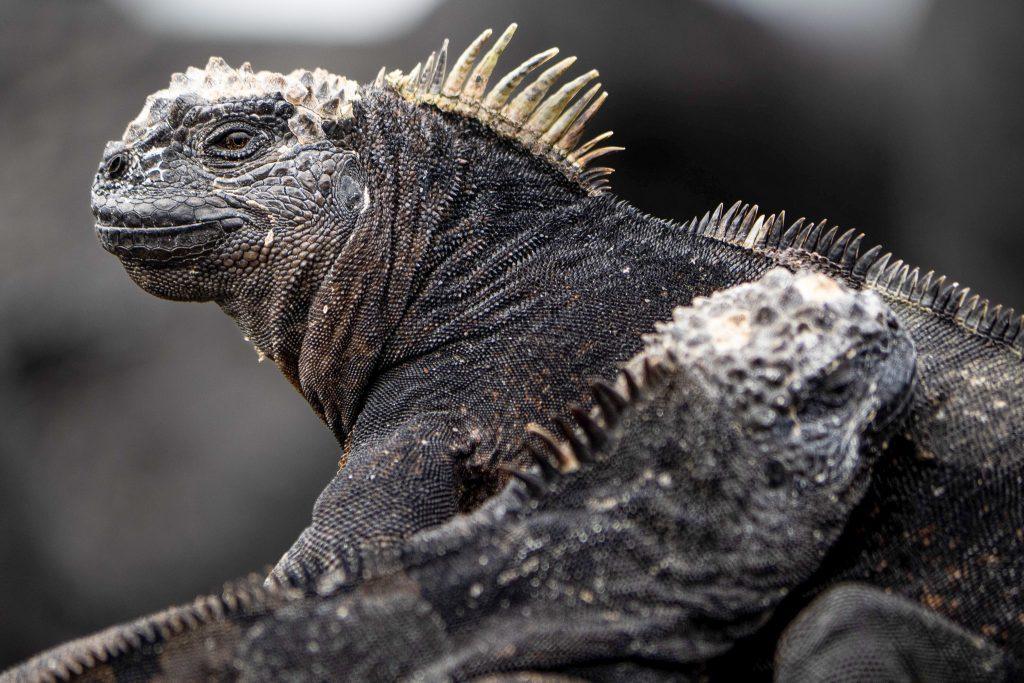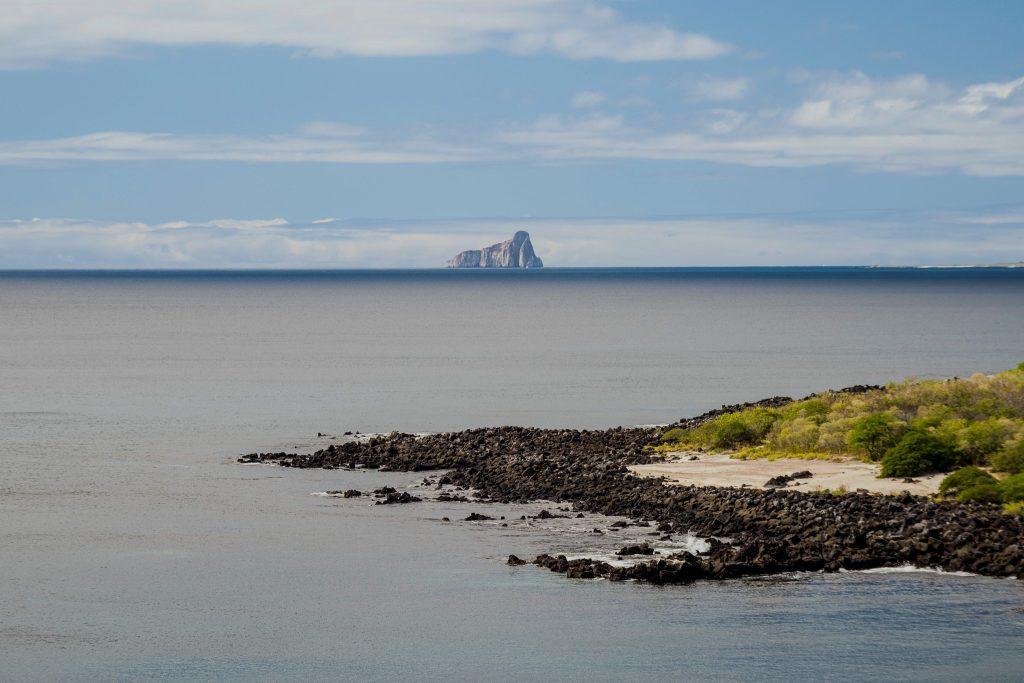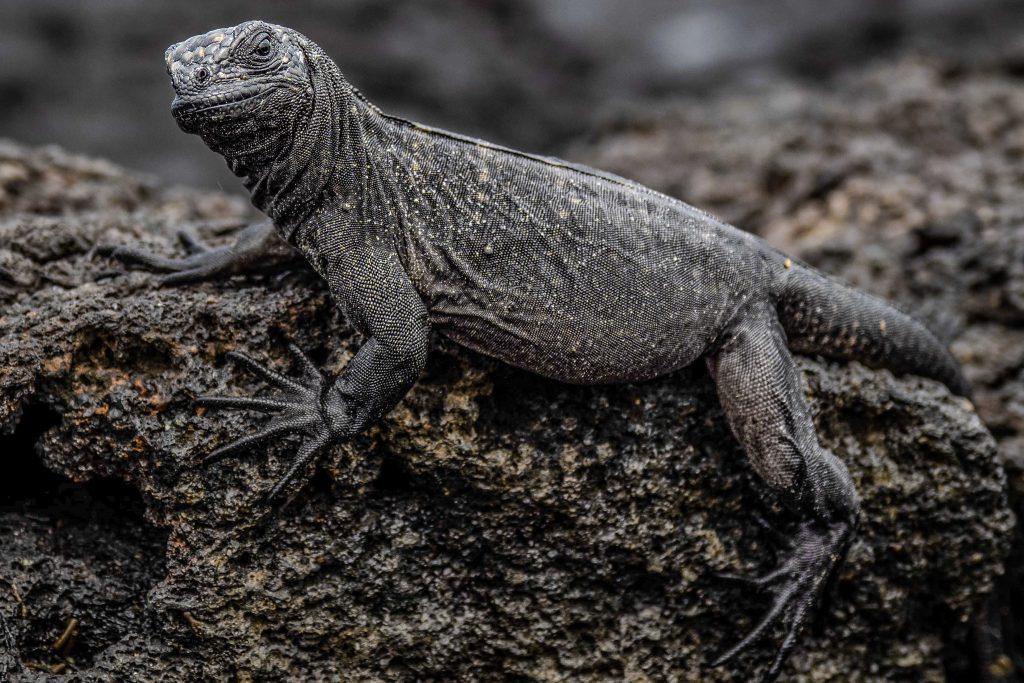Born on hostile volcanic islands, marine iguanas have achieved a unique feat in the animal kingdom. These prehistoric reptiles have become the only lizards capable of diving into the sea. Between extreme adaptation and ecological fragility, their story tells the improbable alliance between life and salt.
Article by Damien Lafon and photographs by Svetlana Markoff.

Marine iguanas, living witnesses of evolution
Marine iguanas are a fascinating biological curiosity. Indeed, Amblyrhynchus cristatus is the only species of marine lizard on Earth. Their existence defies the limits of possibility, for they thrive in an environment that is both arid and oceanic. Native to the Galápagos, they have survived millions of years of isolation. Each detail of their anatomy reveals an adaptation to a unique ecosystem. Although often described as primitive, these reptiles embody an exceptional evolutionary success. Their story perfectly illustrates how life adapts to the most extreme environments.
Their morphology is the result of a slow evolution shaped by the sea. Their stocky bodies and powerful limbs make swimming and clinging to wave-battered rocks easier. Moreover, their flattened tails act like fins, providing efficient propulsion underwater. Their blunt teeth, arranged in tight rows, allow them to scrape algae from the stones. Finally, their nasal glands expel the excess salt absorbed during dives — a vital survival mechanism. Thanks to these traits, marine iguanas can feed underwater while avoiding dehydration. Each adaptation appears perfectly sculpted for an amphibious life.
Did you know?
During food shortages, especially during El Niño events, marine iguanas can reduce their body size by up to 20 percent! They partially digest their own bones to lower energy demands, then regain normal size when food becomes abundant again.

Marine iguana behavior under oceanic constraints
Each day, these reptiles face extreme conditions. After diving, they climb onto black volcanic rocks to absorb solar heat. Their body temperature drops sharply in the cold Pacific waters, and to compensate, they remain motionless for long minutes, exposed to salt wind and curious gulls. Colonies often gather on the same coastal areas to create favorable microclimates. Dominant males fiercely defend these territories, especially during mating season. Yet, despite their warrior appearance, their behavior remains peaceful most of the time. This simple social organization optimizes group survival along hostile shores.
Their diet depends almost entirely on marine algae. These plants, abundant on submerged rocks, are their main energy source. To reach them, iguanas dive up to ten meters deep and hold their breath for several minutes. Then, they scrape rock surfaces with astonishing precision. However, climatic cycles notably El Niño sometimes reduce algal availability. During such crises, some individuals stop feeding for weeks. Even more remarkably, their bodies can temporarily shrink to lower energy needs. These lizards thus embody a biological resilience few species can match.
Did you know?
There are known cases of hybrid iguanas, born from a male marine iguana and a female land iguana of the Galápagos. These hybrids combine traits of both species some terrestrial, others aquatic a rare genetic curiosity.

The threats facing marine iguanas
Today, this emblematic species faces multiple dangers. First, extreme climate variations disrupt their food sources and reproductive cycles. Second, animals introduced by humans such as dogs and rats prey on eggs and hatchlings. In addition, plastic pollution and oil spills contaminate their coastal habitats. Unregulated tourism also causes chronic stress, altering natural behaviors. Finally, global warming may modify ocean productivity and algal growth. Despite their legendary endurance, marine iguanas remain vulnerable to imbalances caused by human activity.
Yet all hope is not lost. Thanks to the protection of the Galápagos National Park and its marine reserve, populations remain generally stable. Scientific monitoring programs now use drones and 3D modeling to measure numbers precisely. In parallel, environmental education projects raise awareness among visitors about the fragility of island ecosystems. These combined efforts nurture hope for a more sustainable future for this unique species. If conservation policies continue to adapt to climate change, marine iguanas may still reign for centuries over volcanic rocks their dark silhouettes standing proudly against the ocean, eternal symbols of the balance between land and sea.
Follow us on Instagram and Facebook to keep up to date and support our media at www.helloasso.com
This article may be of interest to you: Frogs, revealing a changing world
